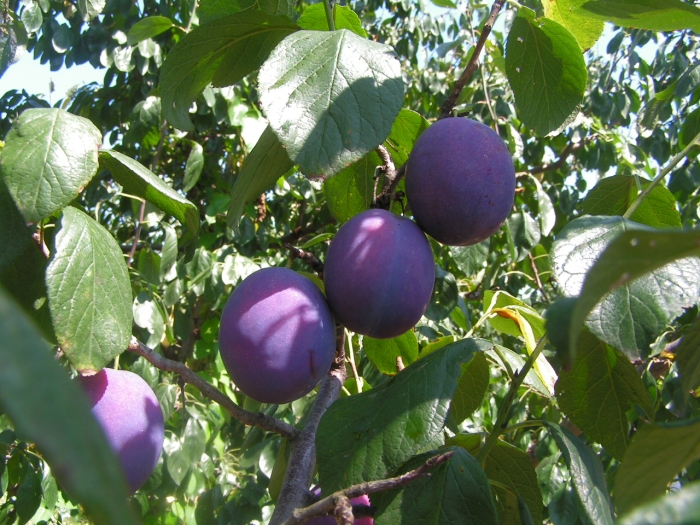European Plum
(Prunus domestica)
European Plum (Prunus domestica)
/
/

YAMAMAYA
CC BY-SA 3.0










































































Estimated Native Range
Summary
The European Plum is valued for its fruit production and is often used in orchards and private gardens. It is adaptable to a range of soil types, provided they have medium drainage, and it thrives in full sun. The tree’s early flowering and fruiting require protection from late frosts, making a sheltered location essential. While it can be grown in small spaces due to modern rootstocks and cultivation techniques, gardeners should be aware of its potential to become invasive outside its native range. Prunus domestica can suffer from pests and diseases common to stone fruits, such as plum pox virus and bacterial canker.CC BY-SA 4.0
Plant Description
- Plant Type: Tree
- Height: 8-10 feet
- Width: 8-10 feet
- Growth Rate: Moderate
- Flower Color: White
- Flowering Season: Spring
- Leaf Retention: Deciduous
Growth Requirements
- Sun: Full Sun
- Water: Medium
- Drainage: Medium
Common Uses
Bee Garden, Bird Garden, Butterfly Garden, Edible*Disclaimer: Easyscape's listed plant edibility is for informational use. Always verify the safety and proper identification of any plant before consumption., Fragrant, Rabbit Resistant, Showy Flowers
Natural Habitat
Temperate forests, woodland clearings, and scrub areas across Europe and Western Asia, extending into the Caucasus and into regions of Turkey
Other Names
Common Names: Damson Plum, Pflaume, Zwetsche, Prunier, Prunier D’Europe, Prunier De L’Islet, Prunier Domestique, Kroosjes, Pruim + Kroosjes, Pruim
Scientific Names: , Prunus domestica, Prunus ballota, Prunus domestica var. domestica, Prunus rosiflora, Prunus virescens, Prunus cerasiflora, Prunus domestica var. claudiana, Prunus latifolia, Prunus erubescens
GBIF Accepted Name: Prunus domestica L.